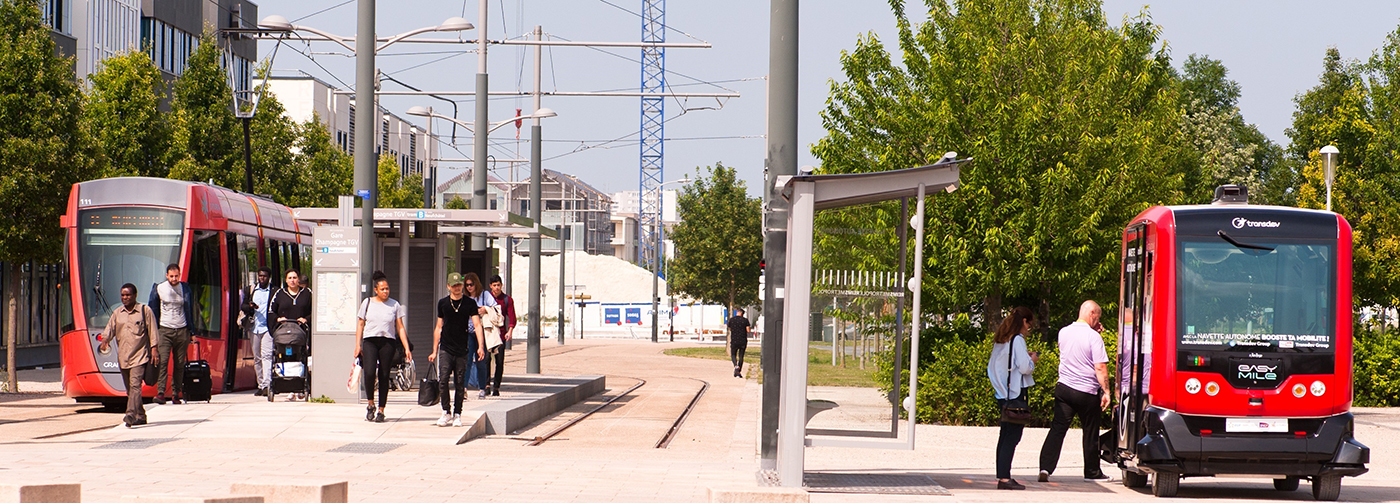
Car-Free Cities in the Future?
November 27, 2018 — The Big Picture
Future mobility won’t mean flying cars or hypersonic trains. But, it will mean a new mode of consumption. A new model for society. New practices. The transport sector is the biggest source of greenhouse gas emissions. And individual cars are largely responsible for that. 75 percent of people use their own personal cars to get to work. Only 11 percent use public transport. It is becoming environmentally urgent for us to make way for a new model. People have to be freed from their dependency on their own cars. Mobility as a Service (MaaS) needs to be a vector for new practices. For people accustomed to using public transport, MaaS will just be another tool to make their day-to-day journeys easier. For others, it needs to be the solution for making them leave the car in the garage once and for all.
Single-person car use is not a choice. It’s a constraint.
- It’s a constraint because some regions are poorly or not at all served by public transport – particularly the countryside and outlying suburbs.
- A constraint because all too often, the time that people spend in public transport is something that they endure, rather than being fully experienced.
- A constraint because when public transport services do exist, they are complex and difficult to understand.
People’s own cars, on the other hand, provide them with flexibility in their travel arrangements. The car remains a symbol of individual freedom in today’s society. But it also contributes to global warming, it worsens congestion in town centres which are already saturated and is a major financial cost for households. In France, in 2016 the average annual cost of ownership for an individual car was €5883, according to the Automobile Club Association (ACA). A colossal budget – particularly for families which are less well off. The same year, the average Parisian spent around 64 hours of the year (over 2 and a half days) sitting in traffic jams, according to the INRIX Global Traffic Scorecard.
We want to put an end to the reign of the individual car by giving everyone the option to take advantage of a clear and easy-to-understand mobility solution.

In towns, the number of mobility options available has exploded!
Transport systems have become extremely complicated. This is even more the case when it comes to urban mobility. Alongside the metro systems, buses and trams that make up mass transport systems, we have car-sharing schemes and other shared mobility solutions (self-service bicycles for example). Not forgetting taxis, walking or cycling, all of which are alternatives to individual cars. Since the available mobility solutions are not managed centrally, users are unable to take advantage of their sheer wealth. As the Boston Consulting Group indicated, in 2017, 49 percent of people living in the Paris area had between three and five mobility apps on their smartphones. Of these, 27 percent had more than six. The numbers of mobility solutions available have exploded. Let’s simplify it all!
Turn a transport service into an integrated and multimodal mobility service
If we want fewer cars on the roads, we need to turn mobility into a service for all users, wherever in the region they may be. Provide them with personalised mobility solutions that are adapted to their individual requirements and get them from door to door. That’s the meaning of MaaS. Bring and pay all modes of transport together into a single application. To get from point A to point B, users need to know which route is the shortest and which mode of transport they should use. We have to give them the option to book an electric bicycle or use a car-sharing service in the same application as the one that they use for purchasing their tramway or bus travel card. First and foremost, MaaS is a spine. A digital thread around which all modes of transport and all public and private mobility stakeholders are clustered.

At Transdev, we have understood that the mobility of the future will be able to meet individual mobility requirements, while at the same time adhering to the global commitments we have made for a sustainable future. We were the first to believe in MaaS concept by investing in MaaS Global from starting point and being also shareholder of Tranzer in Netherlands. In Mulhouse, France, we have launched the Mobility Account for accessing the town’s various transport services. It already covers the tramway, the tram-bus, the bus, self-service bicycles, bicycle security services, the Citiz car-sharing service and the Civitia and Indigo car parks. In the future, we’ll be adding taxis and regional trains. The Mobility Account was launched two months ago and has already led to an 80% increase in the use of car-sharing and self-service bicycles across the urban area. All of these services are gathered together in a single account, and users receive one bill at the end of the month.
But the economic models underpinning MaaS still need to be defined. They need to be combined with a proactive policy implemented by the organising authorities to promote public transport and the implementation of incentives designed to enable users to take full advantage of the most suitable and environmentally-friendly modes of transport. By creating positive synergies between public authorities and all mobility stakeholders, we’ll succeed in creating a more inclusive, sustainable, connected and personalised form of mobility.